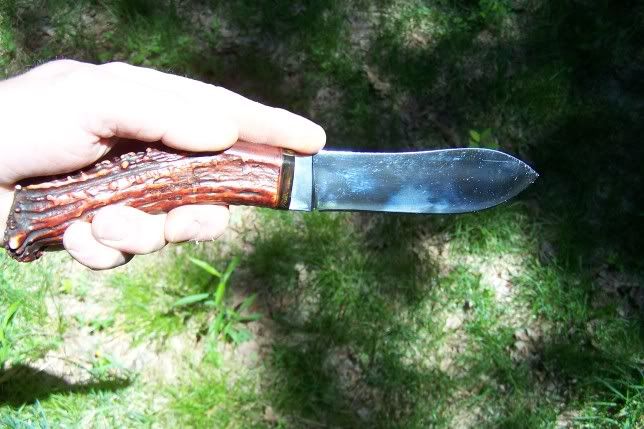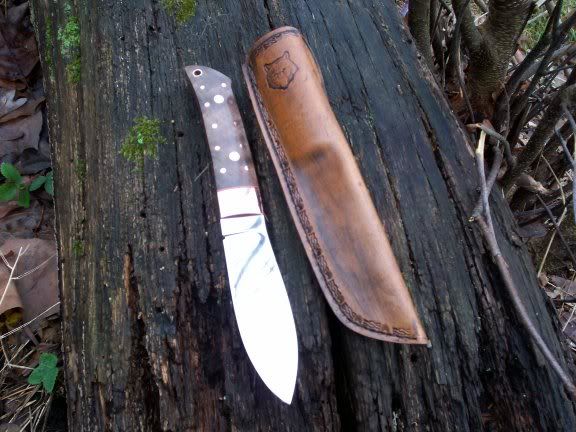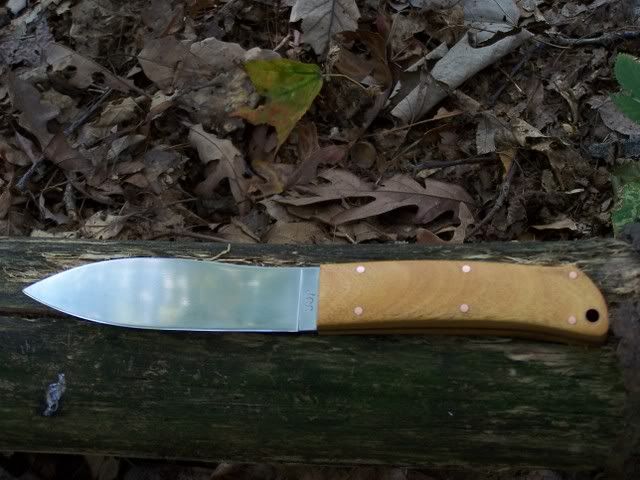The term Nessmuk is probably the most abused out there. Any knife with a "hump" on the blade is now called one by their oblivious makers. You can find them in Scandi Grinds, saber grinds, hollow grinds etc, with blades as thick as 1/4 inch. They are Nessmuks in the same sense that a painting by Joe Schmuk selling his work at the local garage sale is a Rembrandt.
The original Nessmuk was a thin bladed skinner....period. The blade shape was not all that different than a number of skinning knives already in use in packing houses. The advantage of Nessmuk's design, as used by Sears, was that it was more portable. In his writing, Sears stressed a trio of edged tools; the Nessmuk(for skinning large game), the small, double bitted axe and a "stout two bladed" pocket knife for all else. There are actually two versions of the Nessmuk that are correct. The original stick tang as pictured in Sear's writings and a full tang version developed by Nessmuk's(the indian) friend and presented to the famous outdoor writer Jack Mcphee. Mcphee settled in the Fairbanks, Alaska area after WWI and was a well known outdoor writer who hunted extensively and used that knife exclusively. If you want to see an accurate reproduction of the full tang, then google on Bob Engnath and Walt Knebuhler Knives. I bought one of Bob's blades back when I was first starting out and it was a nice skinner. Either version of the knife had a convex(or flat) ground blade of around 4.5-5.0 inches and was out of steel no thicker than 1/8 inch; most likely thinner. I mean, it was just a skinning blade.
One of the nice features of the original Nessmuk full tang was that little nub on the back of the handle.
In one sense it captures the profile of the original stick tang, but it also proved to be a handy little thing that really helped to index your hand.
To give you my ideas; I've made two Nessmuks. One is a personal one for me out of the horn of a huge 12 pointer I shot. The knife follows the original profile and blade length(5 inches) but is pretty good sized since the horn was thick. The only difference between it and the original is I used a horn spacer between the antler and the blade; Nessmuk just had the blade stuck into the antler.

The second one is the full tang version that I make today. Mine normally are out of 3/32" D-2 and can be fancy or plain. I pretty much follow the Engnath/Knebuhler designs. About the only thing I did was lower the point a bit to make it more useful for all around use. It's a wicked slicing knife. Other than that, it's pretty close.


As far as current makers of Nessmuks go, the one that comes to mind is Mike Mann
http://www.idahoknifeworks.com/hfishing.htm. While not quite historically accurate in overall design(mainly the handle), it's supposed to be a nice knife. If you google on Nessmuk knives you'll probably find others. The only one to avoid is Dale Chudzinski; he has had serious customer delivery problems, and may not be making knives anymore.
If I've gotten a bit carried away in this post, it's that I just hate it when anyone with a belt grinder can create a humped "something" without any consideration for the original design and stick a famous name on it. It REALLY irritates me. Have fun
